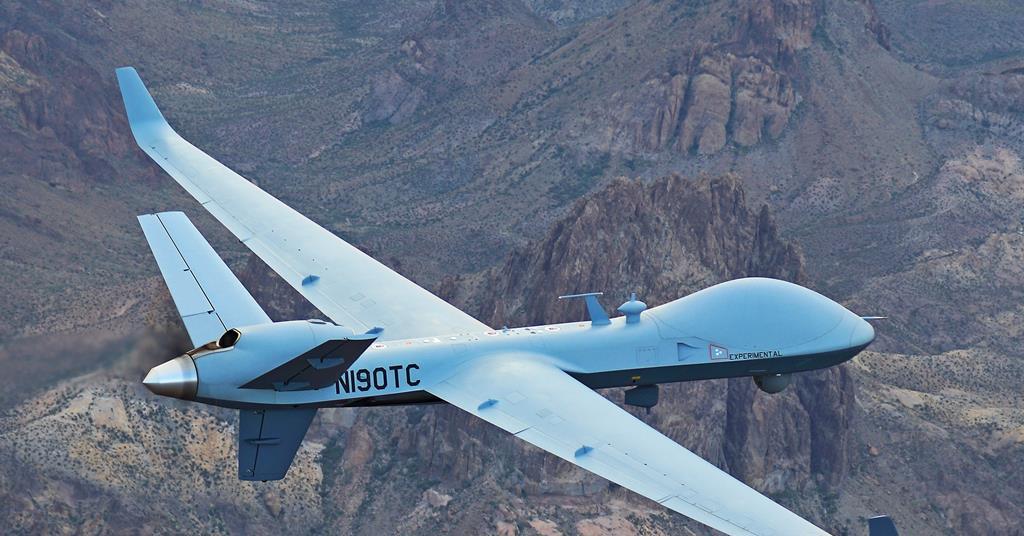Inquiry warns of possible Airbus A320neo and A330neo transponder-loss incidents before patch fully rolls out
Company
Legal Links
Contact
- +44 7947 753363
- contact@skylineairporttransfers.co.uk
- 6 Walsall Street Bilston Wolverhampton WV14 0AT
Recent Posts
© Skyline Airport Transfers. Created by![]() Beaphoenix WebDesign ltd
Beaphoenix WebDesign ltd
Popular Locations:
Birmingham: Aston, Bournville, Edgbaston, Erdington, Great Barr, Hall Green, Handsworth, Harborne, Northfield, Quinton, Soho, Sutton Coldfield, Amblecote, Brierley Hill, Coseley, Cradley, Gornal, Halesowen, Kingswinford, Lye, Netherton, Sedgley, Stourbridge, Quarry Bank, Bearwood, Blackheath, Cradley Heath, Great Bridge, Old Hill, Rowley Regis, Smethwick, Tipton, Tividale, Wednesbury, West Bromwich, Balsall Common, Bickenhill, Castle Bromwich, Chelmsley Wood, Dorridge, Elmdon, Hampton in Arden, Kingshurst, Knowle, Marston Green, Meriden, Monkspath, Hockley Heath, Shirley, Aldridge, Birchills, Bloxwich, Brownhills, Darlaston, Leamore, Palfrey, Pelsall, Pheasey, Shelfield, Streetly, Willenhall, Bilston, Blakenhall, Bushbury, Compton, Ettingshall, Heath Town, Oxley, Penn, Tettenhall, Wednesfield, Burntwood, Lichfield, Cannock, Rugeley, KIDDERMINSTER, Brierly Hill,
STOURPORT-ON-SEVERN
Coventry: Allesley, Binley, Keresley, Stoke, Tile Hill
Leicester: Abbey Rise, Ashton Green, Aylestone, Beaumont Leys, Bede Island, Belgrave, Blackfriars, Braunstone, Braunstone Frith, Bradgate Heights, Clarendon Park, Crown Hills, Dane Hills, Evington, Evington Valley, Eyres Monsell, Frog Island, Goodwood, Hamilton, Highfields, Horston Hill, Humberstone, Humberstone Garden, Kirby Frith, Knighton, Mowmacre Hill, Netherhall, Newfoundpool, New Parks, North Evington, Northfields, Rowlatts Hill, Rowley Fields, Rushey Mead, Saffron, Southfields, South Knighton, Spinney Hills, Stocking Farm, Stoneygate, St. Matthew’s, St. Mark’s, St. Peters, Thurnby Lodge, West End, West Knighton, Western Park, Woodgate
Derby: Matlock, Ripley, Ashbourne, ILKESTON, SWADLINCOTE , BURTON-ON-TRENT, BAKEWELL,
ALFRETON, BELPER, HEANOR
Telford: Market Drayton, Newport, Shifnal, Broseley, Much Wenlock
Stoke: Stoke-on-Trent, Newcastle, Leek, Uttoxeter, Stone, Stafford
Worcester: Worcester, Droitwich, Pershore, Broadway, Evesham, Malvern, Tenbury Wells
Gloucester: Gloucester, Cheltenham, Stroud, Cirencester, Tewkesbury, Badminton, Berkeley, Blakeney, Chipping Campden, Cinderford, Coleford, Drybrook, Dursley, Dymock, Fairford, Lechlade, Longhope, LydbrookLydney, Mitcheldean, Moreton-in-Marsh, Newent, Newnham, Ruardean, Stonehouse, Tetbury, Westbury-on-Severn, Wotton-under-Edge.
Nottingham: Nottingham, Sutton-in-Ashfield, Mansfield, Newark, Southwell, Grantham, Sleaford
Leicester: Leicester, Hinckley, Loughborough, Melton Mowbray, Oakham Market, Harborough, Lutterworth, Wigston, Ashby-de-la-Zouch, Ibstock, Markfield
Oxford: Oxford, Kidlington, Chipping Norton, Thame, Wallingford, Didcot, Wantage, Abingdon, Banbury, Carterton, Woodstock, Bicester, Witney, Chinnor, Watlington
Chester: Chester, Deeside, Bagillt, Buckley, Holywell, Birkenhead, Preston, Wallasey, Wirral, Neston, Ellesmere Port, Prenton
Airports we serve:
BHX: Birmingham Airport
EMA: East Midlands Airport
LHR: London Heathrow Airport
MAN: Manchester Airport
LGW: London Gatwick Airport
LTN: London Luton Airport
SOU: Southampton Airport
BRS: Bristol Airport
LPL: Liverpool John Lennon Airport
LCY: London City Airport
STN: London Stansted Airport



French investigators probing incidents involving losses of transponder and collision-avoidance capability on Airbus jets are warning that further occurrences are likely before software patches for a radio-system fault are fully rolled out.
Around 1,000 Airbus aircraft, primarily A320neo-family models, require the patches and Airbus has developed temporary procedures for A320neo and A330neo crews to address the situation in the meantime.
Three events in French airspace – two of which are regarded as serious – occurred over a seven-month period, and investigators have identified seven other events over a broader two-year span.
The incidents have been traced to failures in the digital radio and audio integrated management system, known as DRAIMS, which is fitted to certain Airbus A320neo, A330neo and A350 jets.
It enables pilots to interact with radio navigation and communications, transponders, and the collision-avoidance system.
But French investigation authority BEA says an unanticipated failure mode with DRAIMS can lead to a cascade of problems. The system’s audio management unit is vulnerable to tiny interruptions in network connectivity, causing it to switch to a degraded mode and generate erroneous messages to various functions.
“The erratic nature of the failure makes it impossible to predict, with certainty, its operational consequences on the functions controlled by DRAIMS,” states BEA.
But crucial communication systems are particularly affected – among them radio, controller-pilot datalink, aural alerts, transponder and collision-avoidance availability.
The three incidents investigated show that appearance of the failure – and notably its management in real time – can “compromise all the safety barriers” aimed at preventing a mid-air collision, says BEA.
One of these incidents involved a Transavia A321neo, which was operating Alicante-Amsterdam on 29 April when the pilots experienced desynchronisation of their radio management panels and transponder problems.
Reims area control centre lost radar contact with the aircraft, and it was forced to orbit and start descending from 36,000ft after being refused entry to Maastricht and Brussels airspace.
While descending the jet came into proximity with a Norwegian Boeing 737 Max cruising at 34,000ft en route to Gothenburg, which had been instructed to deviate left of its flightpath to avoid the orbiting A321neo.
BEA says the aircraft were separated by 3.9nm (7.2km) laterally and 1,400ft vertically, adding that this incident, in particular, highlights the risk presented by the DRAIMS failure.
Another loss-of-separation event occurred on 20 September last year while an Aer Lingus A320neo, cruising at 33,000ft en route to Bordeaux, experienced radio panel issues and multiple alerts for functions including the transponder and collision-avoidance system.
Radio and radar contact was lost and the crew, following procedures, opted to descend to Bordeaux as the nearest airport. The pilots managed to establish radio contact with a Bordeaux approach controller while descending through 10,000ft for 8,000ft.
By this point the A320neo had come into close proximity – some 3.2nm horizontally and 175ft vertically – with a Bordeaux-bound British Airways aircraft, and the controller asked the BA jet to turn left onto a 090° heading. But this instruction was received and followed by both aircraft, still vertically separated by only 500ft, without the controller picking up the double read-back.
BEA’s investigation covers a second incident involving a different Transavia A321neo, heading for Amsterdam on 13 January. Its crew also encountered desynchonised radio management panels and repeated instances of the collision-avoidance system switching to standby mode, and the jet disappeared from radar several times while also transmitting random transponder codes.
Of the other seven occurrences identified by BEA, six centred on A320neo-family aircraft and the other on an A330neo.
French aerospace firm Thales has developed a software patch for the audio management unit which monitors the vulnerable component and initiates an automatic restart if a failure is detected. It also prevents corrupted transmissions to DRAIMS functions.
The European Union Aviation Safety Agency has certified the modification and mandated its installation in June.
BEA says that, as of 1 July, around 110 A320neo-family aircraft had been modified out of 1,062 delivered without the patch. All newly-manufactured aircraft are already equipped.
EASA has directed that the fleet modification be completed by early December 2026, but BEA cautions that, owing to the nature of the issue, “it is likely that there will be other incidents before the entire fleet is retrofitted”.
BEA adds that a similar patch is being certified for the A330neo, while one for the A350 will be introduced with the next DRAIMS version. Around 30 A330neos and 25 A350s are affected.
Airbus’s temporary procedures for the A320neo family and A330neo were mandated by EASA in February this year. These procedures either involve a manual restart of the audio management unit or – in the case of A330neos – de-activation of two radio management panels in favour of using a third.
BEA says no procedure has been drawn up for the A350 because a DRAIMS failure cannot force the transponder into standby mode, and mitigating measures are not considered necessary.
Airbus also established temporary procedures for abnormal equipment behaviour to deal with radio panel desynchronisation and audio quality problems identified after DRAIMS was introduced.
BEA is still investigating the three incidents involving the Transavia and Aer Lingus aircraft, but stresses that a failure of DRAIMS affecting transponders “cannot be handled in the same way” as a conventional transponder failure.
Crews should consider the possibility of random system deterioration, and a total loss of radio and radar contact, before deciding whether to deviate from a published flightpath or air traffic control route. Monitoring the emergency radio frequency of 121.5MHz is also important, given that a DRAIMS failure could make changing radio channels impossible.
Source link
Share This:
admin
Plan the perfect NYC Memorial Day weekend
Pack only what you need and avoid overpacking to streamline the check-in and security screening…
LA’s worst traffic areas and how to avoid them
Consider using alternative routes, such as Sepulveda Boulevard, which runs parallel to the 405 in…
Airbus amends de-icing checklists after ditch-button slips trigger cabin-altitude alerts
Airbus has updated de-icing checklists after a number of incidents in which aircraft have failed…
Denmark advances on Lockheed Martin AGM-114R Hellfire missile acquisition from USA
Denmark has secured approval from the US Department of State to advance a planned acquisition…
Turkish Airlines embarks on major infrastructure projects including cargo and MRO centres
Turkish Airlines has participated in groundbreaking ceremonies for multiple infrastructure projects including Turkish Technic’s engine…
IAG names successor as finance chief Cadbury steps down
British Airways and Iberia parent company IAG’s chief financial officer, Nicholas Cadbury, is to step…
Nacelle damage to 737 undetected until day after Faro landing incident: investigators
Portuguese investigators have disclosed that a Ryanair Boeing 737-800 flew four flights before the discovery…
US military intercepts Russian-linked oil tanker Bella 1 in North Atlantic
The US military has seized a Russian-flagged oil tanker in international waters off the coast…
Performance indicators feature in revised Russian flight-safety programme
Russia’s government has approved a new flight-safety programme on which it intends to establish a…
BA A380 turbulence probe credits live-weather app with limiting injury risk
UK investigators have highlighted the benefit of access to real-time weather apps, after a turbulence…
Armed Forces of Malta signs deals for extra Beechcraft King Air maritime patrol aircraft and Leonardo Helicopters AW139
The Armed Forces of Malta Air Wing is to expand its fleets of Beechcraft King…
Russia arms Shahed drones with anti-aircraft missiles to target Ukrainian fighters and helicopters
In the latest instance of rapidly evolving drone tactics being used in the Russia-Ukraine War,…